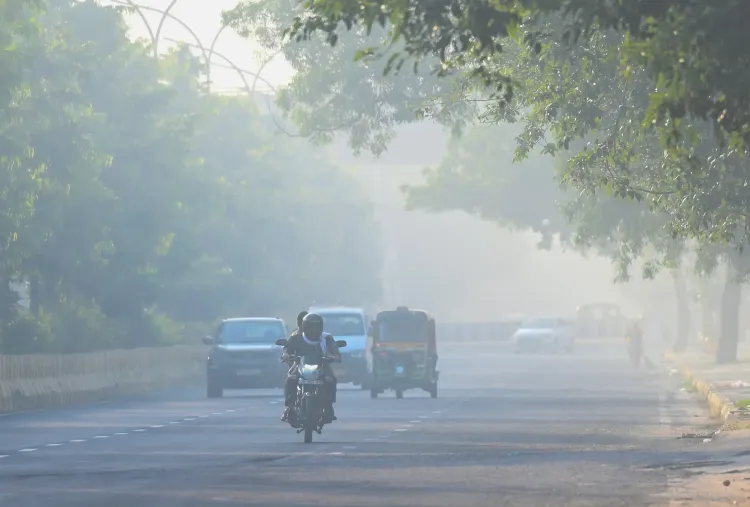How Did AQI in Punjab and Haryana Drop to Severe Levels Post-Diwali?

Synopsis
Key Takeaways
- Chandigarh AQI reached 146, categorized as 'poor'.
- AQI levels in Punjab and Haryana dropped to severe categories post-Diwali.
- Fewer stubble burning incidents reported this year compared to previous years.
- Major contributors to air pollution include agricultural fires and winds carrying pollutants.
- Continued efforts are necessary to address air quality issues.
Chandigarh, Oct 21 (NationPress) Following Diwali celebrations, the air quality in numerous regions of Punjab and Haryana has plunged into the 'severe' and 'hazardous' classifications on Tuesday.
As reported by AQI.in, a platform dedicated to tracking the air quality index (AQI), Chandigarh recorded an AQI of 146, categorizing it as 'poor'. The AQI scale designates values from zero to 50 as 'good', 51 to 100 as 'satisfactory', 101 to 200 as 'moderate', 201 to 300 as 'poor', 301 to 400 as 'very poor', 401 to 450 as 'severe', and any figure above 450 as 'severe plus'.
In Punjab, the AQI readings were 209 in Ludhiana, 225 in Amritsar, 198 in Jalandhar, 242 in Bathinda, and 233 in Patiala. Meanwhile, in Haryana, AQI levels reached 247 in Faridabad, 343 in Sonipat, 201 in Karnal, 328 in Bhiwani, 247 in Jind, and 279 in Charkhi Dadri. The increase in air pollution has been attributed to agricultural fires.
Nevertheless, this year saw a significant reduction in agricultural fires in both states compared to previous years. On Monday, Punjab reported 45 instances of stubble burning, a minor decline from the record 67 fires noted on October 19, which was the highest recorded this season.
The majority of these incidents were reported in Tarn Taran and Amritsar districts, according to data from the Punjab Pollution Control Board.
Haryana recorded 30 cases of agricultural fires by October 17, a dramatic drop from 601 incidents during the same timeframe last year. The figures for previous years showed 546 in 2023, 330 in 2022, and 1,026 in 2021, indicating a steady decline in stubble burning practices.
District-wise data shows that Jind had the highest number of cases (nine), followed by Sirsa and Sonepat with four each, and Faridabad with three. Kaithal, Panipat, and Yamunanagar each reported two cases.
The practice of stubble burning in Punjab and Haryana is frequently blamed for the increased air pollution levels in Delhi-NCR. An air quality expert noted that the recent spike in AQI levels in Chandigarh can be attributed to winds carrying pollutants from surrounding areas in Punjab and Haryana.









